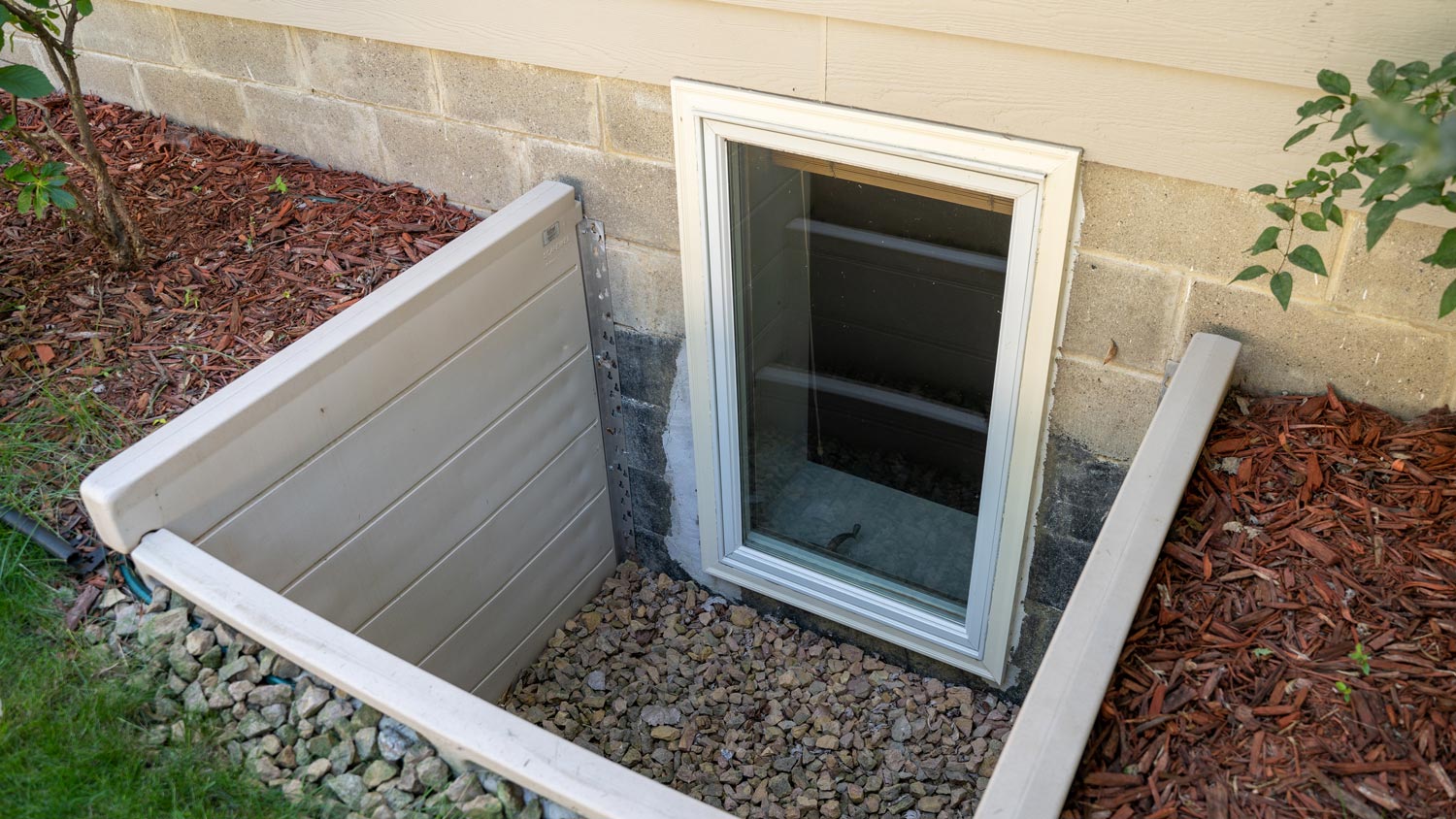
Window wells bring more natural light into your basement and can act as a safe point of egress. Learn about window well replacement costs in this price guide.
Stay safe with up-to-code egress windows


Egress windows allow a safe exit from your home during an emergency.
The codes around these windows follow very specific parameters.
The cost to install egress windows usually runs between $2,500 and $5,300.
Egress windows can be any type of window as long as they follow the guidelines.
An egress window is a window that’s big enough to allow someone to exit during an emergency. The word “egress” simply means “to go out of or leave a place.” Aside from complying with the code for egress windows, egress windows will help keep your family safe by providing an escape route during an emergency, like a fire.
Basement egress windows usually have a window well, which provides enough space for a person to crawl out, and stairs or a ladder for an easy exit. They look like windows built into the foundation of a house with a well or space cut out of the ground around them for easy access.
When finishing a basement or attic space, you’ll need to install egress windows to comply with local building codes.
According to residential codes, egress windows must be present in all sleeping rooms, habitable attics, and basements with finished habitable rooms. Basically, if your basement is a bedroom, den, playroom, or living area, the basement egress window code requires you to have an egress window installed.
Egress window codes apply to rooms like bedrooms, basements, attics, and offices that usually don’t have a door leading to the outside. According to rules laid out by the International Residential Code (IRC), egress windows must:
Open a minimum of 20 inches wide and 24 inches tall
Have a minimum opening of 5.7 square feet
Have a windowsill and egress window height from the floor that’s less than 44 inches up
Be able to be opened without requiring tools
Basically, the window has to be big enough for a person to escape through and not be too high for children to reach. Egress windows also provide an entrance for emergency personnel in the event that they can’t get through a door, so the dimensions account for that potential situation, as well.
Your region's building codes may require a specific size and number of windows for a certain room. Areas like basements, bathrooms, and kitchens all have window code requirements. Your window pro can walk you through the details and ensure your project is up to code.
Most municipalities and states across the country have the same rules that apply to egress window codes. However, you should still check your local rules before starting the project to make sure you’re compliant with regulations. Some of the common regulations for egress windows include having:
A window well floor space of no less than 9 square feet
A permanent ladder if the window well depth is greater than 44 inches
Ladder steps that are at least 12 inches wide and 3 inches away from the back wall but no more than 6 inches from the back wall

The cost to install egress windows in a basement averages around $3,900, ranging from $2,500 to $5,300. Variables that affect the price are your geographical location, the number of windows you need to install, and your choice of window. The types of egress windows available are:
Single-hung: windows with a single moveable sash that opens from the bottom while the top stays still
Double-hung: windows with two moveable sashes that can open either from the bottom up or the top down
Horizontal/sliding: windows that slide open from side to side instead of vertically
Casement: windows hinged on the side that open with a crank, swinging out fully from top to bottom for ventilation
In-swing: windows that swing open into a room instead of swinging out like casement windows
Single-hung windows are the simplest and least expensive of egress window models, while casement and in-swing windows are more costly because of their complexity.
Any window installation professional can install egress windows in your home, whether they’re for your basement, attic, or other rooms. When researching local egress window installers, make sure to check online reviews and source at least three quotes before deciding on a pro for your project. If any of your friends, a family member, or someone in your neighborhood has recently installed egress windows, ask for recommendations.
From average costs to expert advice, get all the answers you need to get your job done.

Window wells bring more natural light into your basement and can act as a safe point of egress. Learn about window well replacement costs in this price guide.

Discover egress window installation costs, and learn about average prices, cost factors, and ways to save on your egress window project.

An egress window can turn an unusable basement into a valuable living space. Learn what an egress window is and if it’s worth installing one.